Thingiverse
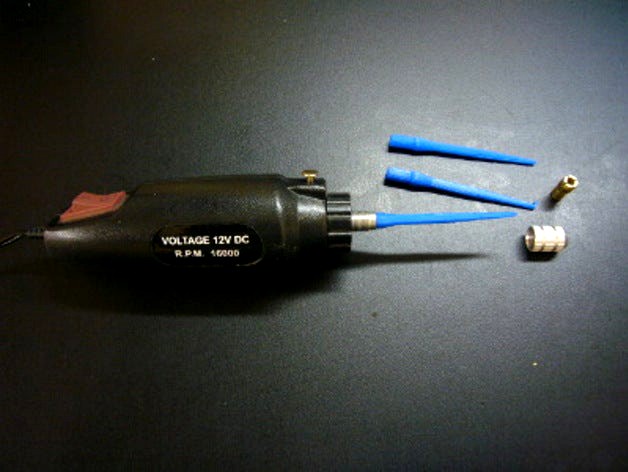
Spin welding rod by Terminus
by Thingiverse
Last crawled date: 3 years ago
These are friction-welding rods for rotary tools.
In the 1980s, Mattel toys offered a plastic model building kit, including a rotary tool to weld the parts together. See Photo of the original welding rods.
This spin-welding / friction-welding technique is often used for 3D part repair and joining. Search YouTube for some videos.
I wasn't happy using regular 1.75mm filament as rod, and made these thicker, stiffer rods. They work much better.
One rod is sized to replace the Dremel collet. Remove the collet, insert the rod, and secure it with the collet retaining nut..
One fits a light duty, 12V rotary tool, $10 from Harbor Freight, in the same manner. Remove this somewhat larger collet, and insert the rod. http://www.harborfreight.com search "rotary tool". Item #63235 or Item #97626 are current valid item numbers.
The last is near 1/8 inch (3mm) diameter straight rod. This one can be inserted into any 1/8 inch collet, like any regular 1/8 in. bit.
,,,,
The Dremel is far too fast at 35,000 RPM top speed. These rods are not balanced and will break off and fly away (into your eye. Wear eye protection). The cheap-tool max is 16,000 RPM, and that's as fast as I would recommend.
I prefer the Cheap-Tool single speed On/OFF for almost everything. Little power is required.
If you weld, you already know how to prepare joints (like beveling edges). If not, a few minutes of study will explain the basics. Surprisingly, running a bead of plastic seems very similar to stick welding. Some practice is worth the effort.
The rod must have nearly the same hardness and melting temperature as what you are welding. Ideally, the printed welding rod is made of the same material as whatever you want to weld together.
,,,,
Printing notes-
Print them laying on their sides so layers are longitudinal, for strength. Otherwise they snap like spaghetti.
Thin round shapes can be hard to print. On the Afinia, they needed more than the default 30 degrees support angle, or the software had problems interpreting the STL file. 40 degrees worked. All other settings were Afinia defaults.
The files are SAE. If your Metric software sees tiny shapes, scale up (X,Y and Z) by a factor of 25.4.
In the 1980s, Mattel toys offered a plastic model building kit, including a rotary tool to weld the parts together. See Photo of the original welding rods.
This spin-welding / friction-welding technique is often used for 3D part repair and joining. Search YouTube for some videos.
I wasn't happy using regular 1.75mm filament as rod, and made these thicker, stiffer rods. They work much better.
One rod is sized to replace the Dremel collet. Remove the collet, insert the rod, and secure it with the collet retaining nut..
One fits a light duty, 12V rotary tool, $10 from Harbor Freight, in the same manner. Remove this somewhat larger collet, and insert the rod. http://www.harborfreight.com search "rotary tool". Item #63235 or Item #97626 are current valid item numbers.
The last is near 1/8 inch (3mm) diameter straight rod. This one can be inserted into any 1/8 inch collet, like any regular 1/8 in. bit.
,,,,
The Dremel is far too fast at 35,000 RPM top speed. These rods are not balanced and will break off and fly away (into your eye. Wear eye protection). The cheap-tool max is 16,000 RPM, and that's as fast as I would recommend.
I prefer the Cheap-Tool single speed On/OFF for almost everything. Little power is required.
If you weld, you already know how to prepare joints (like beveling edges). If not, a few minutes of study will explain the basics. Surprisingly, running a bead of plastic seems very similar to stick welding. Some practice is worth the effort.
The rod must have nearly the same hardness and melting temperature as what you are welding. Ideally, the printed welding rod is made of the same material as whatever you want to weld together.
,,,,
Printing notes-
Print them laying on their sides so layers are longitudinal, for strength. Otherwise they snap like spaghetti.
Thin round shapes can be hard to print. On the Afinia, they needed more than the default 30 degrees support angle, or the software had problems interpreting the STL file. 40 degrees worked. All other settings were Afinia defaults.
The files are SAE. If your Metric software sees tiny shapes, scale up (X,Y and Z) by a factor of 25.4.
Similar models
thingiverse
free

1.75 Collet for rotary tool friction welding by Pseudoclasm
...tool that you only have to print once?" (deep breath). so, yeah. here. now you can just print a peice instead of buying one.
thingiverse
free

Friction Welded Truncated Icosahedron by scorch
...rotary-tool/
edit: i updated the scad file to make it more easily adjustable from a hexagon to other shapes and added comments.
thingiverse
free

Friction Welded Dodecahedron by scorch
...otary-tool/
edit: i updated the scad file to make it more easily adjustable from a pentagon to other shapes and added comments.
thingiverse
free

Dremel Tool Holder by miket90
...ng friction causes heat.
i discovered this procedure here: http://hackaday.com/2014/12/30/3d-printing-technique-friction-welding/
thingiverse
free

Friction Welding Rivets by mifga
...by mifga thingiverse as it happens, a dremel or similar rotary tool can be used to perform a "blind...
thingiverse
free

DW 660 Collet Fan dw660 by mattr254
...t. does not interfere with tool change! can be used with 1/8 or 1/4 collet. flip 180 degrees prior to printing, (large side down)
thingiverse
free

Dremel Workstation Drill Press And Tool Holder
...dremel workstation drill press and tool holder thingiverse similar to the existing dremel-workstation, but uses a regular cheap...
grabcad
free

Dremel Collet
...dremel collet
grabcad
a 1/8" dremel collet
thingiverse
free

Two Card Badge Holder by scorch
...by felipesanches" if the voronoi portion of the openscad code is removed the remaining code can be considered public domain.
thingiverse
free

Dremel Plunge Router / Défonceuse by Aep
...dremel plunge router / défonceuse by aep
thingiverse
for converting a rotary tool (like a dremel) to a router.
Terminus
turbosquid
$3

Joshua Graham Terminus Book
... available on turbo squid, the world's leading provider of digital 3d models for visualization, films, television, and games.
3d_export
$23

heated towel rails terminus astra
...r a particular frame. the anti-aliasing modifier is turned on (display in the viewport - 0 iterations, on the render 1 iteration)
thingiverse
free

garrus terminus armor
...garrus terminus armor
thingiverse
fixed static garrus in terminus armor, with and without the helmet
thingiverse
free

Funnel by Terminus
...funnel by terminus
thingiverse
a funnel to fit gallon water bottles.
thingiverse
free

Ravioli Pin by Terminus
...ravioli pin by terminus
thingiverse
a simple pin, but it works.
thingiverse
free

rocket remix by Terminus
...rocket remix by terminus
thingiverse
rocket by jjbtexas remix
thingiverse
free

soldering station by Terminus
...soldering station by terminus
thingiverse
a compact soldering station
thingiverse
free

Pellets .177 by Terminus
...pellets .177 by terminus
thingiverse
plastic air rifle pellets
thingiverse
free

Lid rack by Terminus
...lid rack by terminus
thingiverse
anti-sloppy-kitchen device.
thingiverse
free

Coffee dispenser by Terminus
...coffee dispenser by terminus
thingiverse
cabinet mount coffee dispenser.
Welding
3d_export
$8

welding of electric welding machine
...ng. the melted welding wire penetrates into the parts to be welded. after cooling, the objects to be welded are firmly connected.
3d_export
$5

welded anchor
...welded anchor
3dexport
welded anchor
3d_export
$17

welding jig for welding of instrument frame welding beam
...obot, so that the robot does not stop working when the manual parts are put on and taken, and the working efficiency is improved.
3d_export
$12

mbt welding fixture
... be used for welding design reference, welcome to download and learn from friends in need. the model contains stp general format.
turbosquid
$35

Welding Robot
...id
royalty free 3d model welding robot for download as blend on turbosquid: 3d models for games, architecture, videos. (1645667)
turbosquid
$2

Welding Robot
...id
royalty free 3d model welding robot for download as blend on turbosquid: 3d models for games, architecture, videos. (1480421)
turbosquid
$10

Welding Machine
...ree 3d model welding machine for download as ma, obj, and fbx on turbosquid: 3d models for games, architecture, videos. (1176188)
3d_export
$10

Welding apparatus 3D Model
...welding apparatus 3d model
3dexport
welding apparatus burner gas-jet
welding apparatus 3d model gaj15 60372 3dexport
3d_export
$20

ultrasonic welding machine welding of nose bar outside mask
...and discharging. the drawing file is sw2016 version with step neutral format. it has a good reference value. welcome to download.
3d_export
$21

welding fixture for automobile body
...ile welding line. we must design welding line suitable for automobile and strive to improve the design and manufacturing ability.
Spin
3ddd
free

Spin
... , табурет
дизайнер staffan holmhttp://www.swedese.se/stools-and-benches/spin/
design_connected
$16

Spin
...spin
designconnected
driade spin computer generated 3d model. designed by lovegrove, ross.
design_connected
$13

Spin
...spin
designconnected
paola lenti spin computer generated 3d model. designed by lenti, paola.
design_connected
$13

Spin
...spin
designconnected
bbb emmebonacina spin computer generated 3d model. designed by barba, rené.
archibase_planet
free

Spinning rod
...g rod
archibase planet
spinning rod spinning rod fishing-rod
spinning rod - 3d model (*.gsm+*.3ds) for interior 3d visualization.
3ddd
$1

Spin / Sumatra
...n / sumatra
3ddd
spin , польша
мягкая мебель (sumatra) польская фабрика "spin"
design_connected
$13

Spin Light
...spin light
designconnected
lasvit spin light computer generated 3d model. designed by koldova, lucie.
3d_export
$5

Spinning 3D Model
...spinning 3d model
3dexport
spinning toy tromp mexican mexico mexicano wood
spinning 3d model micro4004 54359 3dexport
3ddd
$1

Paola Lenti / Spin
...paola lenti / spin
3ddd
ковер
ковер spin фабрики paola lentihttp://www.paolalenti.it/en/product/show/spin/
turbosquid
$6

spin top
...urbosquid
royalty free 3d model spin top for download as obj on turbosquid: 3d models for games, architecture, videos. (1179779)
Rod
archibase_planet
free
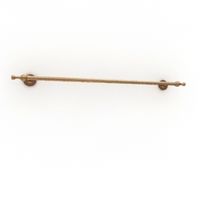
Rod
...rod
archibase planet
shank rod
so rod - 3d model (*.gsm+*.3ds) for interior 3d visualization.
archibase_planet
free

Spinning rod
...g rod
archibase planet
spinning rod spinning rod fishing-rod
spinning rod - 3d model (*.gsm+*.3ds) for interior 3d visualization.
3d_export
$5
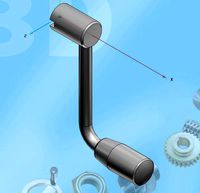
rod handle
...rod handle
3dexport
rod handle
3ddd
$1
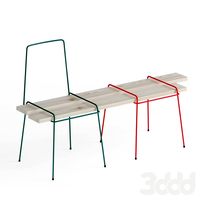
bench with rods
...bench with rods
3ddd
скамейка
bench with rods
3ddd
$1

диван ROD
...диван rod
3ddd
rod , living divani
http://www.livingdivani.it/
3ddd
$1
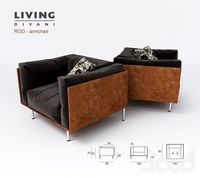
кресло ROD
...кресло rod
3ddd
rod , living divani
http://www.livingdivani.it/
design_connected
$18
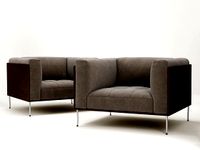
Rod Armchair
...rod armchair
designconnected
living divani rod armchair computer generated 3d model. designed by lissoni, piero.
archive3d
free

Rod 3D Model
...rod 3d model
archive3d
shank rod
so rod - 3d model (*.gsm+*.3ds) for interior 3d visualization.
turbosquid
$15
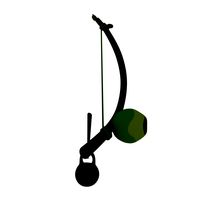
Fishing rod
...urbosquid
royalty free 3d model fishing rod for download as on turbosquid: 3d models for games, architecture, videos. (1684756)
archive3d
free
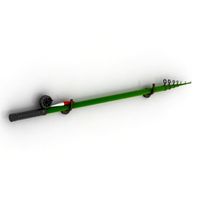
Spinning rod 3D Model
...d spinning rod fishing-rod
spinning rod - 3d model (*.gsm+*.3ds) for interior 3d visualization.
